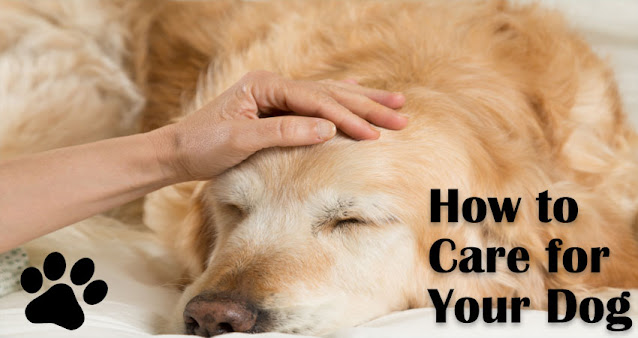Like humans, dogs are prone to many types of diseases when outside temperatures are lower and bacteria start circulating in the air. The most common, compared to the human version of the "cold", is called in simpler terms, "kennel cough".
Dog flu was first observed in racing greyhounds in Florida in the United States in 2004. The CIV H3N8 strain has now spread to more than 38 countries and is commonly found in the canine population. Genetic analysis suggests the virus is closely related to equine influenza, and since greyhounds and racehorses often compete at the same racetracks, it is assumed that canine influenza evolved into the equine virus and spread from horses to dogs.
In 2015, an outbreak of a new breed of canine flu appeared. This breed known as CIV H3N2 is of avian origin rather than related to this earlier CIV H3N8 virus.
Dogs of any age can be affected, and because the viruses are relatively new, the natural immunity of the canine population is little or no. Virtually all dogs exposed to the virus become infected and nearly 80% show clinical signs of the disease. The virus is extremely contagious, but fortunately, it has a meager mortality rate. There is no "season" for this and it extends throughout the year. The dogs most at risk are those that are crowded, the very young, the very old, and even the immunocompromised. The disease does not affect humans.
The virus spreads through respiratory secretions (e.g., mucus and saliva) and infected objects and surfaces (e.g., pasta surfaces, water, food bowls, collars, and leashes). People also spread it between infected and uninfected dogs without proper hygiene or precautions.
Symptoms of Canine Influenza
Indicators of canine flu follow one of two paths, severe or mild, with the mild type being the most common. Symptoms are usually found within 2-3 days of the disease.
💦 Soft wet cough lasting 10-30 times,
💦 Dry cough like kennel cough,
💦 Loss of desire,
💦 Lethargy,
💦 Sneezing,
💦 Discharge from eyes,
💦 Runny nose
💦 Thick discharge from nose
Can Puppies Get the Flu from Humans?
Diseases that spread from animals to humans are called zoonoses. However, there is also the possibility that diseases such as the flu will pass from humans to animals. These are known as reverse zoonoses.
Reverse zoonoses are not well known and are rare. We are aware that ferrets, and sometimes cats, can catch the flu from people, but there is less evidence that puppies do.
Can People Get the Flu from Puppies?
According to the Centers for Disease Control and Prevention, there is no evidence of canine influenza transmission from dogs to humans. There have really been no documented cases of individual flu in their puppy.
Treatment & Vaccination
Treatment is based on the symptoms your dog has introduced. Antibiotics may be prescribed to fight existing bacterial infections. Anti-inflammatories may be prescribed for fever, swelling, and pain. All severely dehydrated dogs will be given a liquid diet. Other medications may be prescribed depending on the additional symptoms present. To make the dog more comfortable, such as cough suppressants, may also be prescribed. In severe cases, hospitalization may be required. Deaths have just been reported early in pneumonia, but the rate is less than 10% of affected dogs.
How to Care for Your Dog
A mild to moderate case of canine flu can often be treated at home in the same way as a case of human flu. However, if your dog seems to be getting worse every day, don't wait any longer, as canine flu can turn into pneumonia and become a serious illness.
Rest
If your dog has got the flu, rest in a soft and comfy dog bed is just what a sick dog needs. Make sure they are hot. Some owners place a heating pad under their dog, but this must be monitored at all times to ensure that the pad does not get too hot and cause burns.
Prevent dehydration
Give your dog plenty of fluids to avoid dehydration. If your dog doesn't want to drink water, add a little flavoring to the water (like this Only Natural Pet Human Grade Bone Broth for pets) to entice him to drink more.
Avoid Irritants
Keep your dog away from environmental irritants and pollutants like cigarette smoke, house dust, etc. as much as possible.
Use Essential Oils
If your dog is coughing, use essential oils to soothe and calm your dog. Essential oils with antibacterial and antiviral properties, such as lavender, eucalyptus, and niaouli oils, are effective.
Add chamomile essential oil for its calming effect so your dog can relax and rest better. Add these oils to a diffuser or vaporizer and use them in the room where your dog rests.
Use Homeopathy
Use this natural homeopathic remedy Newton Homeopathies Cough - Airway to help soothe the cough.
Stimulate the Dog's Immune System
Strengthening your pet's immune system helps speed recovery from canine flu, as well as prevent its further spread. It is the job of the immune system to protect your pet's body from cells infected with bacteria, viruses, fungi or parasites. The immune system also filters out toxins and traps cells powerful enough to fight off dog diseases like canine flu. When the immune system is weak, microorganisms containing infections and toxins can pass through immune cells which are immune.
The most effective methods of strengthening the immune system include basic nutrition and dietary supplements. A puppy who eats whole foods that are free of substances, additives, and allergens such as wheat, soy, and corn may have better health than a puppy who follows a poor diet. Your pet's diet should be rich in organic ingredients similar to those it would consume in nature, and the food should also have a high moisture content.
One way to keep your pet flu-free is to vaccinate them against it. Vaccines have now been released vaccines against the two canine influenza viruses. Flu shots don't guarantee your pet won't get the disease, but if a vaccinated pet doesn't get the flu, it's usually not as bad as unvaccinated puppies.












0 Comments